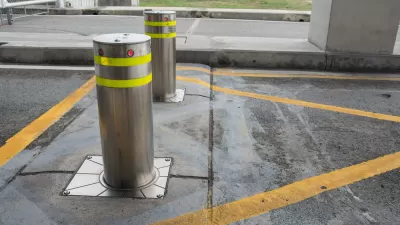With over 8 million people sharing the streets and sidewalks of New York City, there is bound to be a clash between transportation modes. Who's to blame? Lyndsey Scofield says that there is bad behavior on all sides.
In a city as dense as New York City, it is evident to see that many users of transportation exhibit bad behavior when going to their destinations. The actions of many cyclists puts them, as well as pedestrians, in vulnerable positions with the automobiles that also share the roads. Many have suggested removing bike lanes, but cyclists are alone in exhibiting bad behavior. Scofield states that "there are inconsiderate users of all modes of transportation."
Pedestrians are in the wrong because they aimlessly cross into the separated and painted bike path to see if its safe. Pedestrians are also inconsiderate of street lights, still crossing the street in large groups when they do not have the right of way causing even more traffic. Cyclists are in the wrong because they constantly run red lights, and ride down the wrong side of the street. And drivers are in the wrong because they too are careless of pedestrians. They also creep through intersections while groups of pedestrians are still crossing trying to create enough space to drive through.
FULL STORY: Cyclists? Pedestrians? Drivers? Who is to Blame for Urban Tension?

Maui's Vacation Rental Debate Turns Ugly
Verbal attacks, misinformation campaigns and fistfights plague a high-stakes debate to convert thousands of vacation rentals into long-term housing.

Planetizen Federal Action Tracker
A weekly monitor of how Trump’s orders and actions are impacting planners and planning in America.

San Francisco Suspends Traffic Calming Amidst Record Deaths
Citing “a challenging fiscal landscape,” the city will cease the program on the heels of 42 traffic deaths, including 24 pedestrians.

Defunct Pittsburgh Power Plant to Become Residential Tower
A decommissioned steam heat plant will be redeveloped into almost 100 affordable housing units.

Trump Prompts Restructuring of Transportation Research Board in “Unprecedented Overreach”
The TRB has eliminated more than half of its committees including those focused on climate, equity, and cities.

Amtrak Rolls Out New Orleans to Alabama “Mardi Gras” Train
The new service will operate morning and evening departures between Mobile and New Orleans.
Urban Design for Planners 1: Software Tools
This six-course series explores essential urban design concepts using open source software and equips planners with the tools they need to participate fully in the urban design process.
Planning for Universal Design
Learn the tools for implementing Universal Design in planning regulations.
Heyer Gruel & Associates PA
JM Goldson LLC
Custer County Colorado
City of Camden Redevelopment Agency
City of Astoria
Transportation Research & Education Center (TREC) at Portland State University
Jefferson Parish Government
Camden Redevelopment Agency
City of Claremont




























